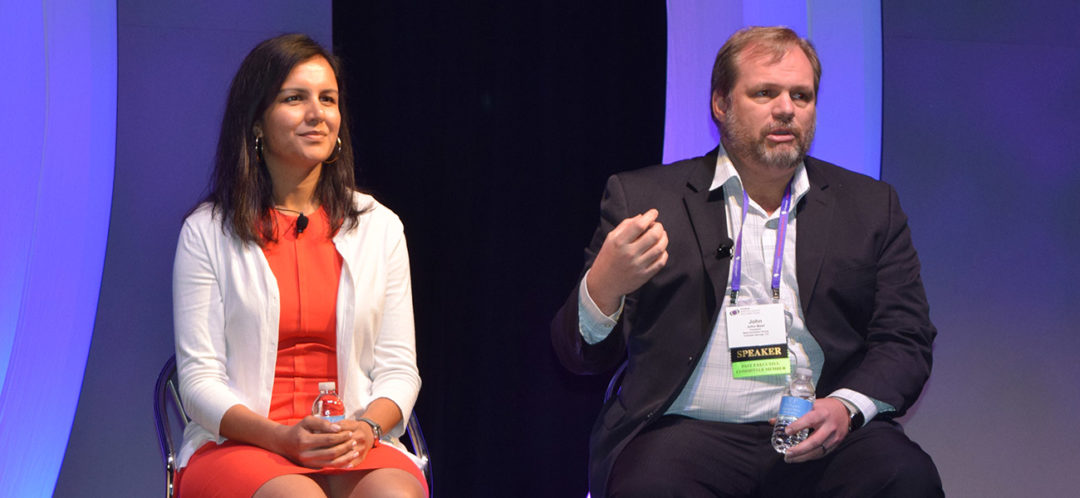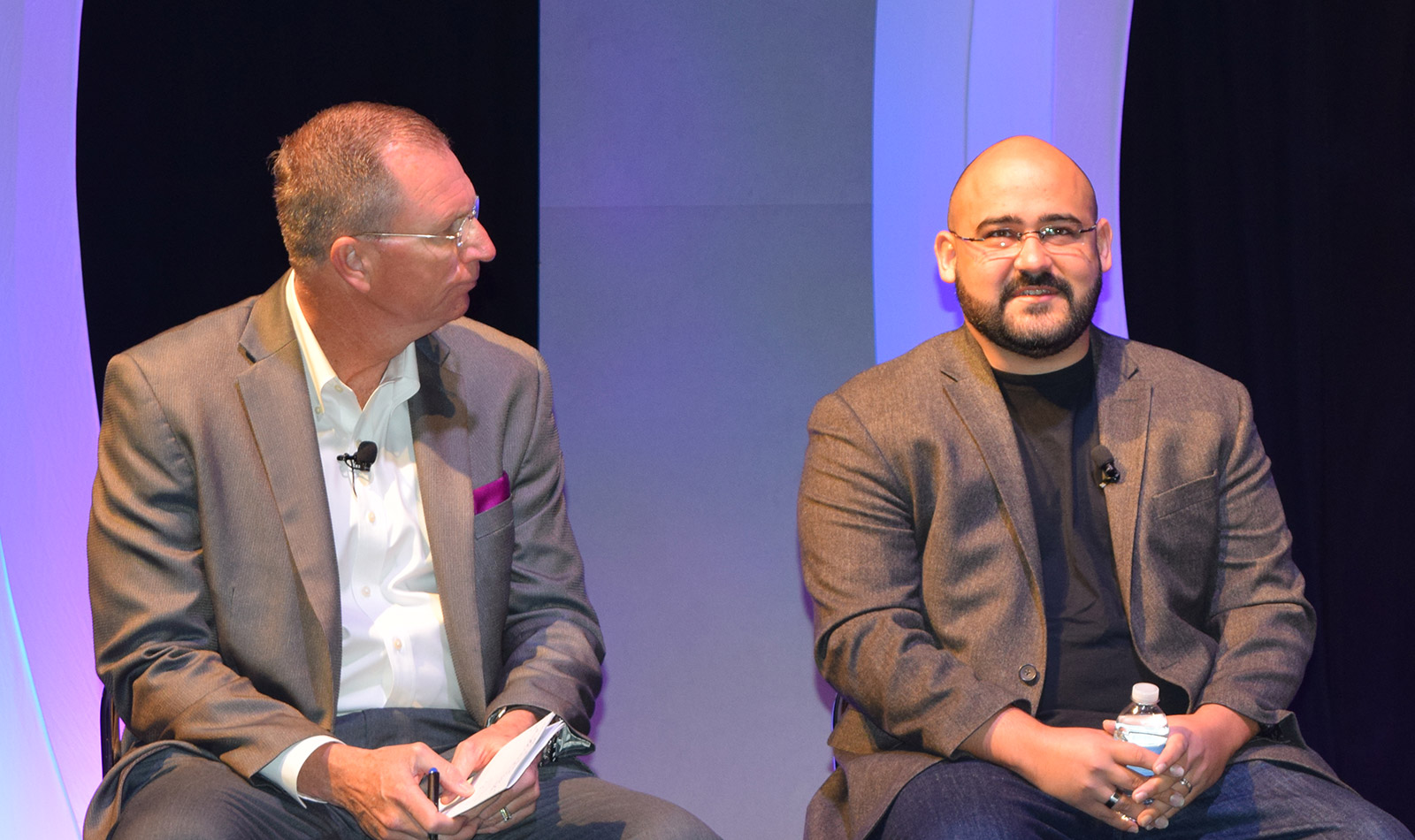
‘Tech Talks’ panelists: Focus on the member experience
‘The people taking your market share aren’t playing by the same rules.’
Want to stay ahead of fintech companies and other disruptors? Try to beat yourself, says Sam Mallikarjunan, principal, marketing strategy, for HubSpot.
In other words, if you were going to put your credit union out of business, think of how you would do it.
Click to enlarge. Conference emcee Patrick Adams (left) asks HubSpot’s Sam Mallikarjunan about CUs’ top technology challenges.
“You need to think that way to adapt,” he says. “The key to adapting is acknowledging that we live in an unfair world. The people taking your market share aren’t playing by the same rules. That changes the mindset you need to have.”
Mallikarjunan participated in a panel discussion about marketing technology and other issues Friday at the CUNA Marketing & Business Development Council Conference in San Antonio.
Joining him on the “Tech Talks” panel were John Best, CEO of Best Innovation Group; Priya Dozier, head of innovation for PSCU; and moderator/conference emcee Patrick Adams.
In response to audience questions submitted via tweets, the panel discussed:
• Growth in connected devices. There will be 50 billion devices connected to the internet by 2020—far more devices than people, says Dozier.
“We’ll be able to reach members everywhere they are,” she says. “We need to make sure our products are in the right place when members are ready to make a purchase. We need to provide services in the context of their lives.”
• Top technology challenges. Credit unions need to be better at “continuous improvement,” Best says.
Facebook, for example, implements updates every week. “They’re small changes, but they add up over the future,” he says. “You need to get into an operational rhythm to handle continuous improvement and continuous delivery.”
Credit unions need to “break” their technology, Dozier says. “We’re using legacy technology and layering digital technology on top of it. It gets very taxing. We need to design technology for the member experience.”
Mallikarjunan agrees. “Change your mindset from how you use technology to what experience you want to provide. Focus on where you need to be, and then decide how to get there.”
Technology development and implementation typically are the information technology department’s purview, he adds. “But they’re not the ones using it. This slows you down and makes it easier for others to beat you.”
• The future of branches. Despite advances in technology, the panelists believe branches will continue to play an important, albeit different, role in serving members.
“Our people are our top asset,” Best says. “Branches need to stick around. I like being able to talk to someone if I want to. I don’t want branches to end up like laundromats—so impersonal.”
“There’s a strong argument for branches remaining the ID of your brand,” says Dozier. “When members need high-touch skills or consultation, they want to talk to a human.”
“I hate branches,” Mallikarjunan says. “But if I have a complicated problem, I want to talk to a human. But I don’t want to deposit money in a branch or get money from one. That’s making the consumer conform to your world. It should be the other way around.
“Humans will take the path of least resistance,” he adds. “Whoever creates that path will win.”
